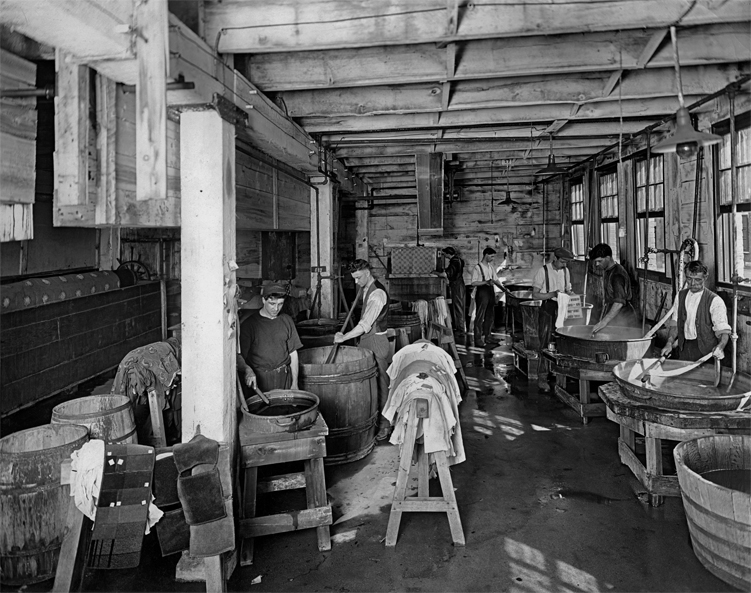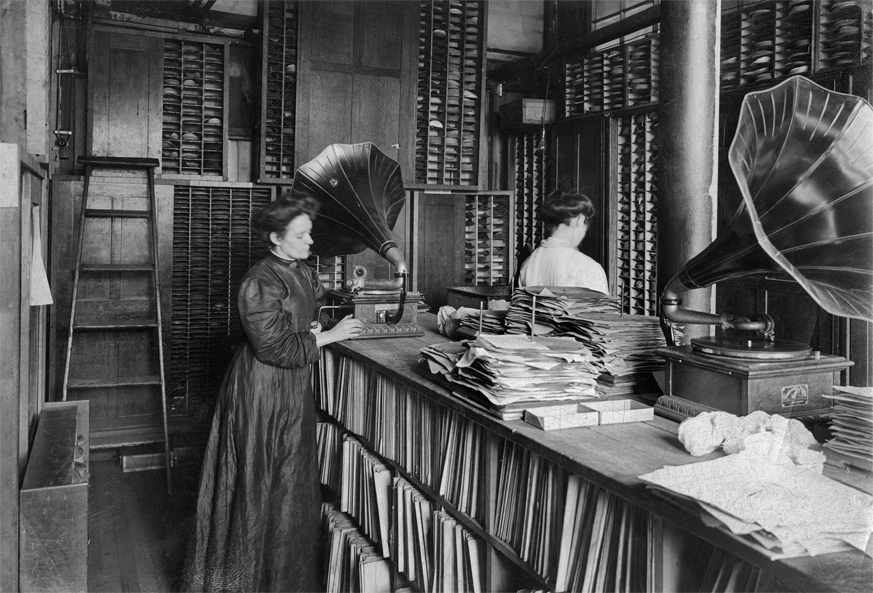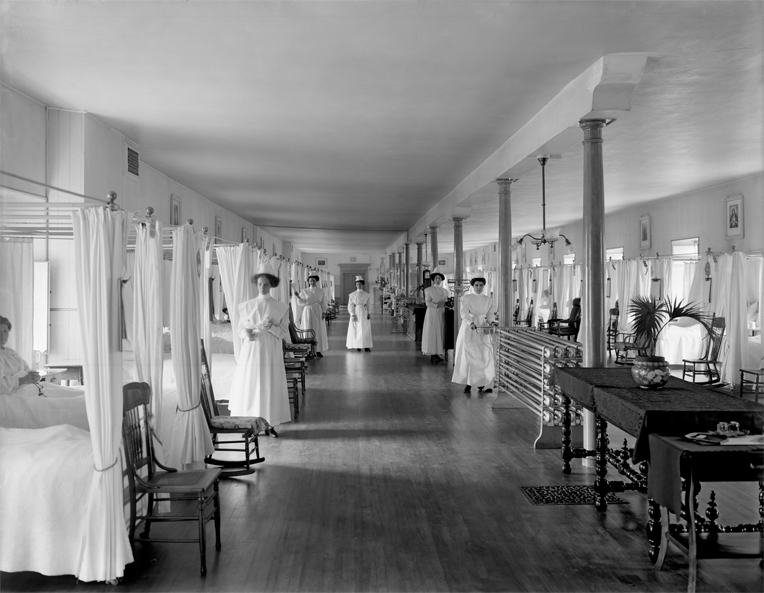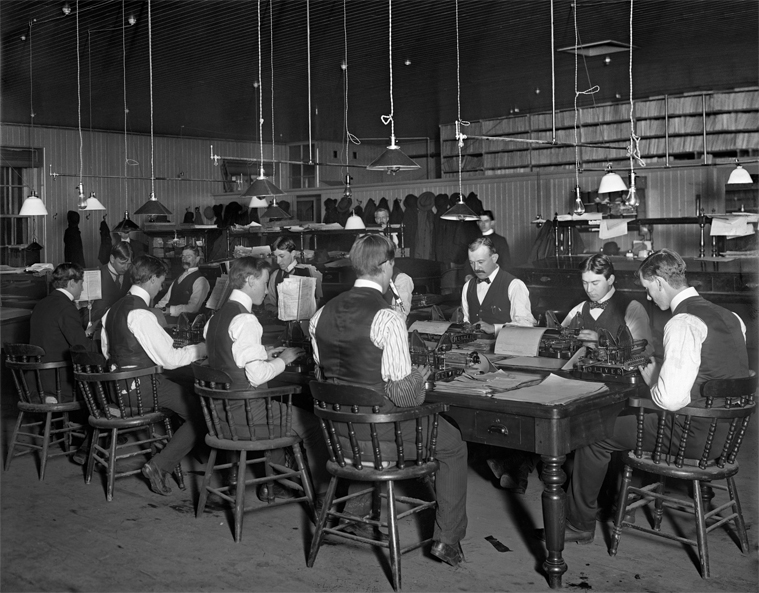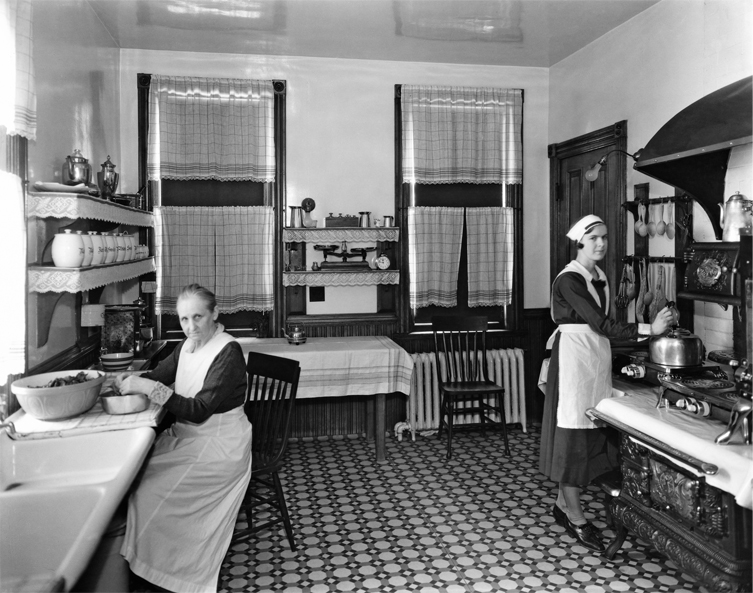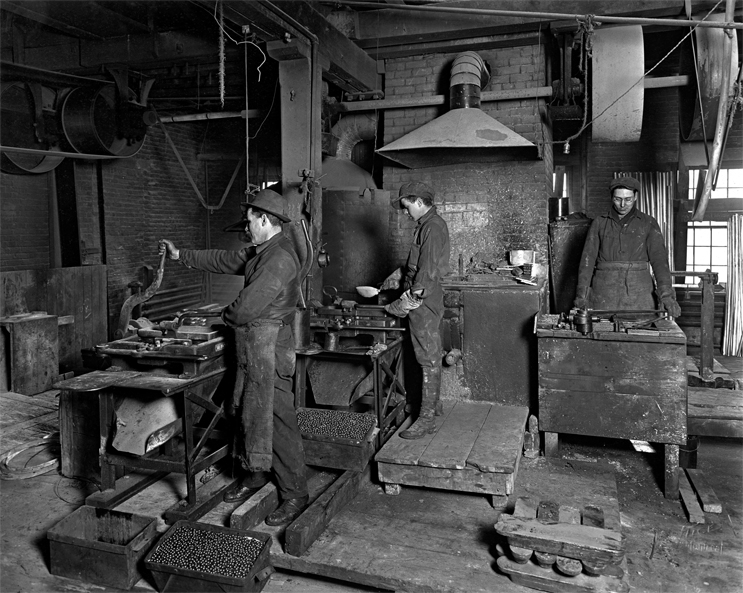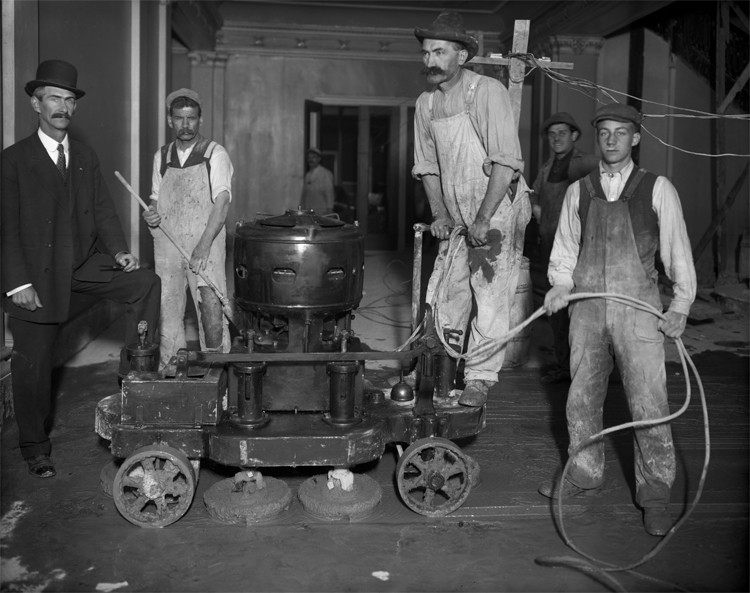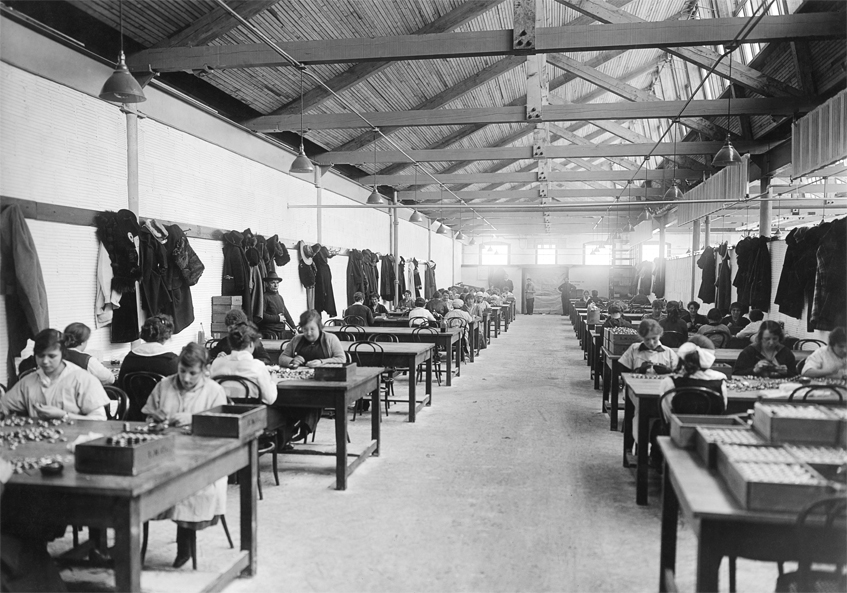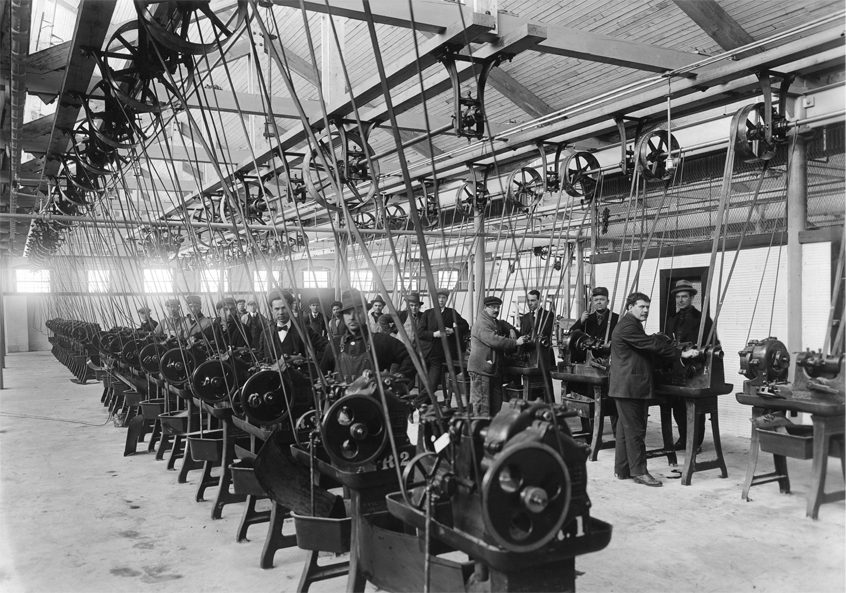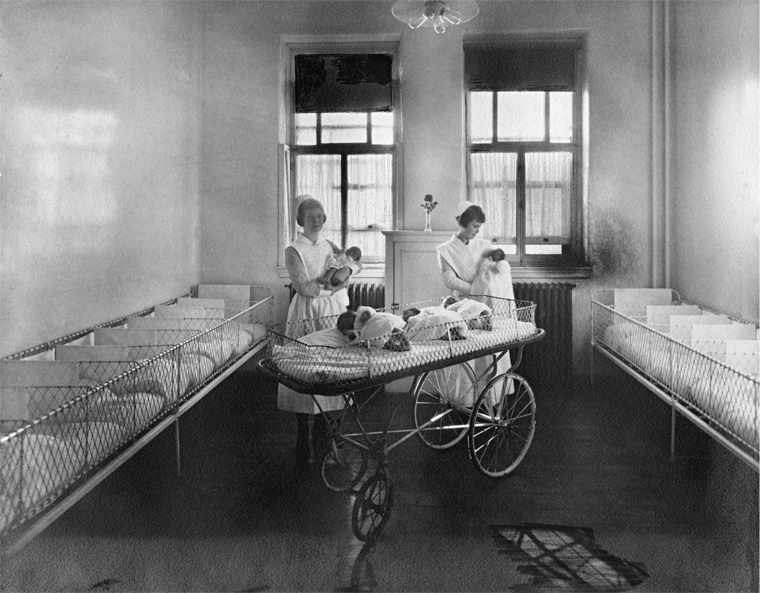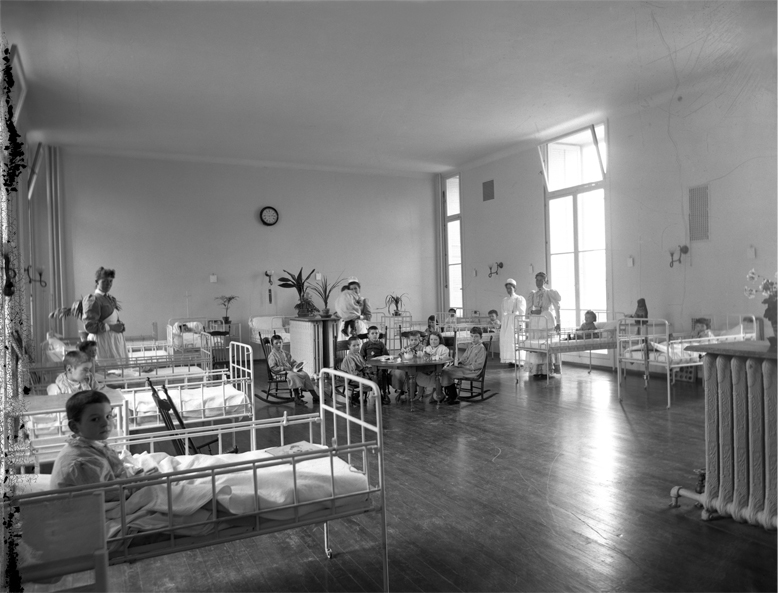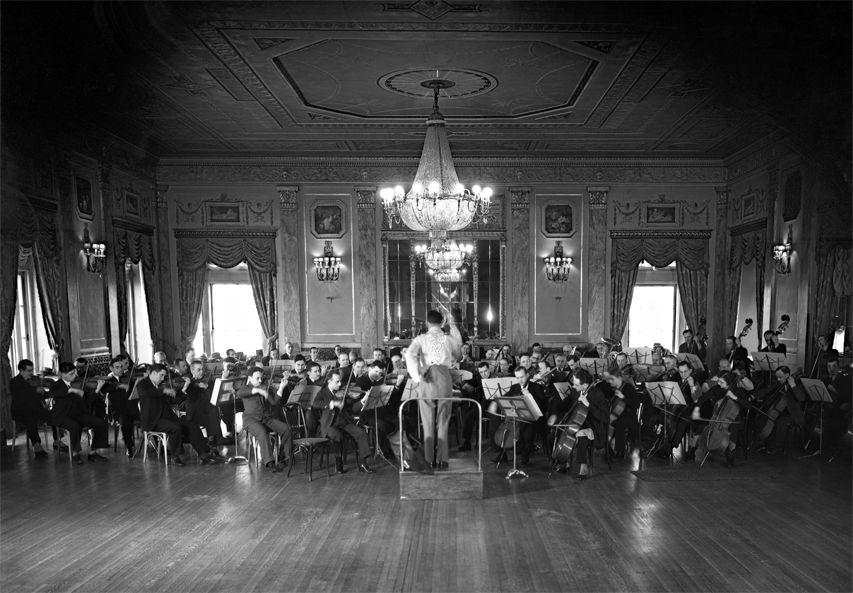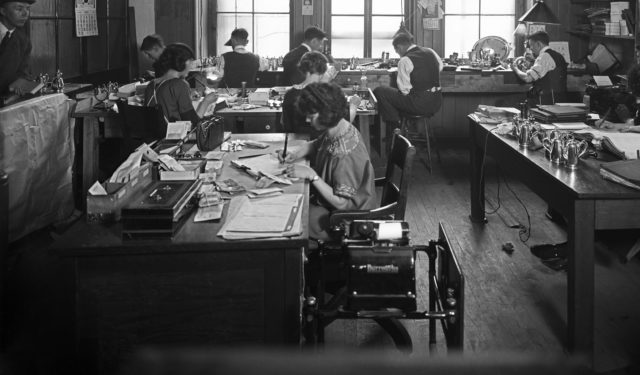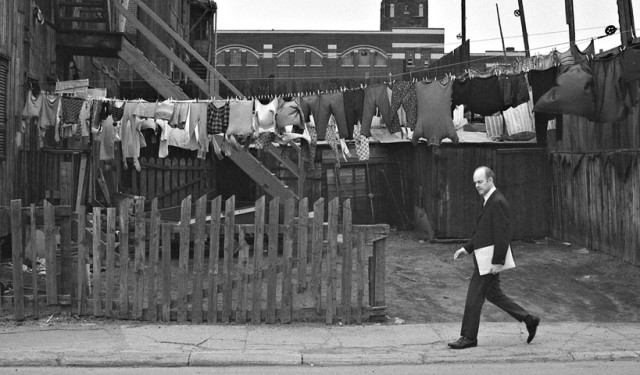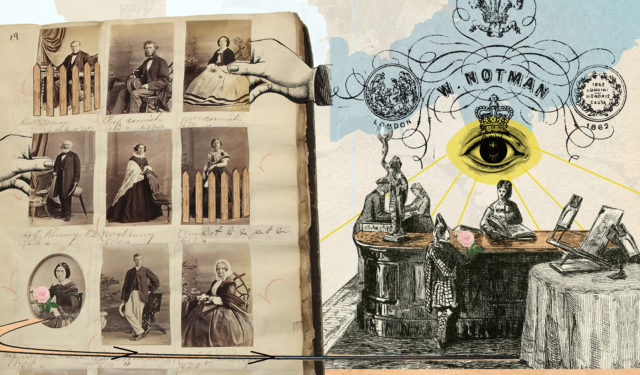Montreal at Work
A look at various Montreal workplaces in the early decades of the 20th century.
September 1, 2022
A number of photographs in the McCord Stewart Museum’s collection picture establishments where Montrealers were employed during the early decades of the twentieth century, taking us back in time and offering glimpses of the settings and atmospheres in which men and women of the period earned their livelihoods. This incursion into workspaces of bygone days reveals that although some of the occupations illustrated still exist, work conditions have changed radically. The images also show how Montreal’s business activity was concentrated in the area that is now the borough of Ville-Marie.
Aside from the cleaning of clothes and household items, the firm of Dechaux Frères Limitée specialized in dyeing. The workers employed on this task, who were required to have at least six years’ experience, dyed different types of material – clothing, drapes and carpets. Serving customers throughout Quebec, the company boasted two Montreal outlets, both on Sainte-Catherine Street, and a fleet of trucks for home pick-up and delivery.
The Berliner Gramophone Company of Montreal etched discs from matrices recorded by Berliner’s American and European affiliates, including the famous German firm of Deutsche Gramophone, founded in 1898. This photograph of the room where the originals were stored shows women checking their quality, a necessary step before the records could be marketed.
Hôtel-Dieu, Montreal’s first hospital, was founded in 1642 by Jeanne Mance (1606-1673), during the New France era. She was assisted in her mission by the Hospitallers of St. Joseph. This order of nuns would take over administration of the hospital, which was dedicated to offering free medical care to the poor, the elderly and the orphaned. At the time this photograph was taken the Hospitallers were still running Hôtel-Dieu, located by then at the foot of Mount Royal. Large wards like the one pictured were for less affluent patients, who were obliged to undergo examinations by medical students.
The organization of freight transport was one of the main activities of the Canadian Pacific Railway company, which had several offices in Montreal, including its corporate headquarters at the intersection of Windsor and Osborne streets. The employees shown here are using Oliver typewriters, machines – usually olive green – whose “batwing” design represented the very latest in technology. The same cannot be said of the chairs, whose height evidently had to be adjusted by placing a book under the cushion.
Until the late 1930s all wealthy Montreal families employed domestic servants, whose tasks included the provision of meals. The kitchen of an affluent house underscored social distinctions, taking the form of a closed room in an area that made encounters between masters and staff unlikely. This photograph was evidently taken in summertime, when cooking was done on an electric plate placed on top of the unlit wood stove, to avoid overheating the kitchen.
These employees at the Notre-Dame Works are making the small lead bullets carried inside a Shrapnel shell, an artillery weapon developed by British Army officer Henry Shrapnel (1761-1842) that was in wide use during World War I (1914-1918). In the foreground are a number of lead ingots that were to be melted down to make the small round bullets, resembling marbles. The factory pictured, located near the Lachine Canal on Notre-Dame Street, between Vinet and Dominion, was one of five steelworks that amalgamated in 1910 to form the Steel Company of Canada Ltd. (Stelco).
These workers were employed by the Smith brothers, who ran one of Montreal’s leading companies specializing in the installation of marble, granite and tiles, and in the fabrication of cement and terrazzo floors. The firm’s material depot was located at 458 Bleury Street. Among the major construction projects in which the company was involved were the Henry Birks & Sons building in Montreal and the Château Laurier hotel in Ottawa.
During World War I (1914-1918) thousands of Canadian women worked in munitions factories that supplied the British Army. They were frequently assigned tasks requiring particular dexterity and attention to detail, such as inserting fuses in shells and inspecting finished products.
Between 1914 and 1918 the Canadian government opened a number of munitions factories in Montreal and the surrounding region, as part of its contribution to the war effort. The employment office of the International Manufacturing Co., which hired both men and women, was on Sainte-Catherine Street East, while the workshops themselves were on Notre-Dame Street, east of Viau. This photograph offers a clear view of the steam-driven pulley system linked to belts that powered the machines used to make shells.
When the Montreal Maternity Hospital was first founded by McGill University, in 1843, it occupied a rented house. In 1905 it moved to a new three-storey building on the corner of Saint-Urbain and Prince-Arthur streets. During this period it was a charitable institution run by midwives and nurses, and its patients were drawn largely from the immigrant and working classes. Many were single women, who were offered social assistance after the birth of their child. From the 1880s on, with the increasing medicalization of childbirth, doctors became more involved, and the number of women from all backgrounds who chose to give birth in the Maternity Hospital grew steadily, reaching an annual figure of close to 1,600 in 1925. In 1926 it became part of the Royal Victoria Hospital.
The Royal Victoria Hospital was brand new when Notman took this photograph in 1894, its three pavilions on Des Pins Avenue having been inaugurated the previous year by Canada’s Governor General. The surgical wing included a children’s dormitory laid out according to modern paediatric principles: it was spacious, well ventilated and equipped with furniture on a scale adapted to its small patients.
This picture shows a rehearsal of the Société des Concerts symphoniques de Montréal as it prepared for its first concert, held on January 14, 1935 in the auditorium of the École supérieure Le Plateau, with Rosario Bourdon (1885-1961) conducting. This orchestra, forerunner of today’s Montreal Symphony Orchestra, was founded in 1934 by Athanase David (1882-1953), Quebec’s Provincial Secretary, with the express aim of making classical music accessible to east-end Montrealers and of showcasing French Canadian composers, soloists and conductors.

